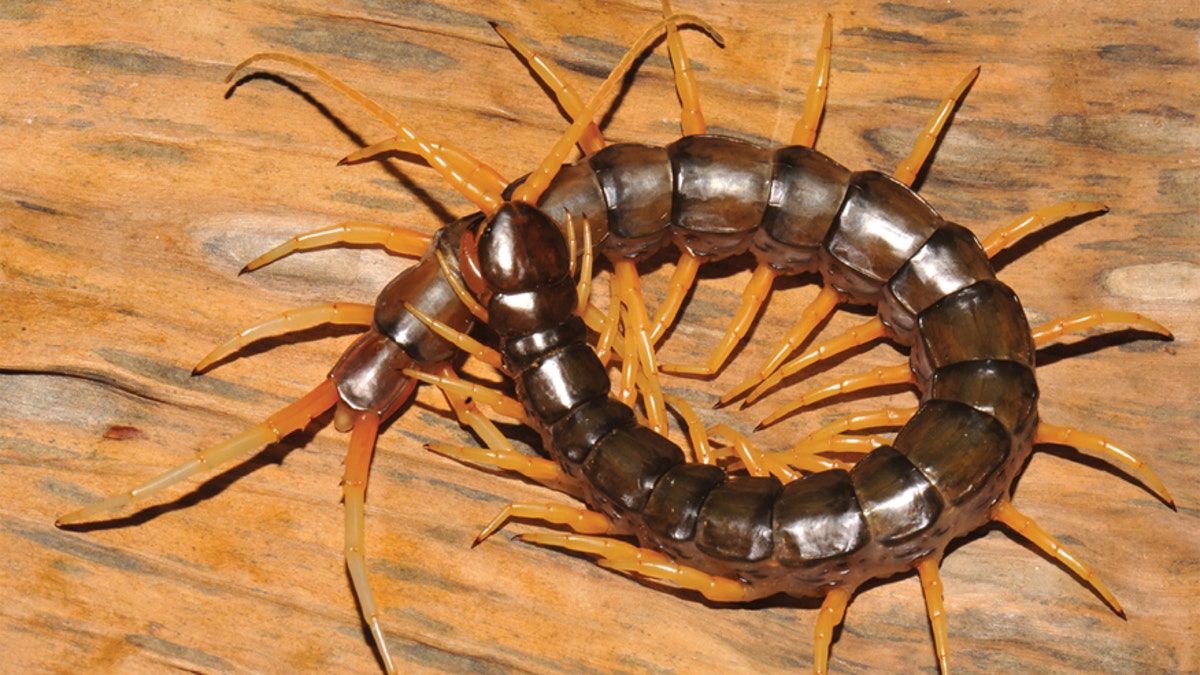
(Natural History Museum/ZooKeys)
It's eight inches long with a painful bite, long legs, and "a horrible dark, greenish-black color." It's also bound to make you avoid all lakes and streams for the near future.
Gregory Edgecombe of London's Natural History Museum says he's discovered a new species of centipede belonging to the giant centipede family Scolopendra that's not only horrible, but the first amphibious centipede species ever found.
Edgecombe found two specimens of Scolopendra cataracta—named after the Latin word for "waterfall"—in Laos and a DNA test proved they were unique. However, the "horrific-looking" species, described in journal ZooKeys, had also been found by Edgecombe's colleague while on his honeymoon in Thailand back in 2001, reports National Geographic.
George Beccaloni explains he was searching for bugs when he found a centipede hiding under a rock. Upon discovery, it escaped into a stream instead of onto land, as a normal centipede would.
When Beccaloni finally captured the centipede, he noted it was a powerful swimmer with a body impervious to water, per Nature World News. But as no centipedes were known to be amphibious, he simply left the centipede in the Natural History Museum's collection.
Unbeknownst to scientists, another S. cataracta was there—collected from Vietnam in 1928—but wrongly classified. Edgecombe notes S. cataracta is only found in Southeast Asia, is carnivorous, and "can deliver a painful bite," but it wouldn't kill a human.
It's more likely to come in handy if the species "goes into the water at night to hunt aquatic or amphibious invertebrates," Beccaloni says. "People tend to study streams in the tropics during the day, but there is probably a whole other range of interesting amphibious things that come out at night," he adds ominously.
(Meet this "centipede from hell.")
This article originally appeared on Newser: Scientists Find Amphibious Centipede���and It's Horrible
More From Newser




















